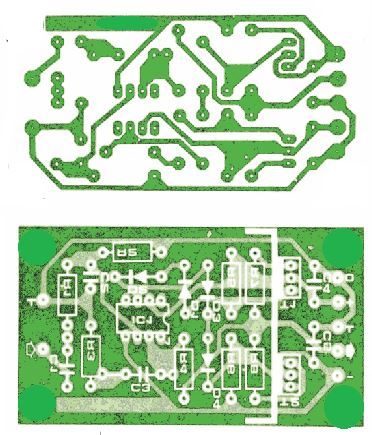The 1 watt power amplifier described here works like a charm when used as a driver for low-impedance headphones or an active loudspeaker as the output stage of a high-fidelity pre-amplifier.
As shown in figure below, the headphone amplifier circuit contains an op amp type LF 356 along with a push-pull transistor output stage.

How it Works
The slew rate of the input signal is kept under control by the low-pass filter R1/C2, which, combined with the comparatively fast LF 356, keeps delay distortion at a minimum.
Whereas, crossover distortion is kept low by the output transistors drawing the 30 mA quiescent current, set by the diodes D1-D4 along with the emitter resistors R7 and R8.
The gain is kept at 15 dB by the R3 and R4 feedback resistors. As a result, the overall distortion with a bandwidth of -3 dB from 10 Hz to 30 kHz comes at just 0.1%.
The amplifier can provide a maximum of 1 watt of power into an 8 Ω load for a 500 mVrms input signal. You can also connect 4 Ω loudspeakers and high-impedance headphones without any problem.
Figure below shows the PCB layout most suitable for this circuit. The two transistors should be installed on heat sinks, without forgetting the insulating washers and heat-conducting paste, to provide resistance against short circuits.

Power Supply
For the conventional use, a simple power supply with a mains transformer having a 6-8 V, 0.5 A center-tapped secondary, an appropriate bridge rectifier, with two 1000 μF/16 V electrolytic capacitors in the normal set-up is required.
A ±15 V regulated power supply would be necessary in case of high-impedance headphones working at high volume.
If the case permits, you may draw this from the pre-amplifier supply, taking care not to short-circuit the output terminals.
Leave a Reply